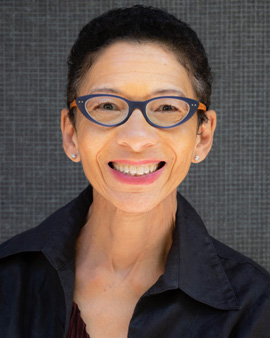
Vivian Lewis, MD, ELAM '04
August 12, 2019
As a woman of color in academia, I’ve often experienced the marginalization, isolation and microaggressions that are inherent in predominantly white institutions. Sadly, being in a leadership position does not shield one. And while affirmative action and the women’s movement have led to tremendous changes in medicine, many of the metrics of progress are more evident for white women than for people of color. Nor are women of color the only group to experience discrimination. Equitable policies are important — but so much of what holds back women and other marginalized groups results from longstanding attitudes and practices that are embedded in the culture of academic medicine. How then can intersectionality contribute to positive change?
Intersectionality is a term coined by legal scholar and activist Kimberle Crenshaw to describe how race and gender come together to create unique forms of discrimination for African-American women (e.g., a company can claim they don’t discriminate because they hire African Americans (predominately men) or that they hire women (disproportionally white). Intersectionality has now become a broader term that offers a way to think about other marginalized identities and the forces of power, rank and privilege. Ideally, intersectionality can help anyone understand commonalities between different identity groups in a non-hierarchical way. At its worst, the concept contributes to a kind of Oppression Olympics — “You think you’ve got it bad, but I’ve experienced much worse as part of X group.”
A few years ago, I was part of a professional development program that included small groups assigned to create workshops for the entire program about specific topics. Our assignment had to do with people with disabilities. During our first conversation about the exercise, one person mentioned in passing that her son has cerebral palsy. Eager to get to the task at hand and perhaps uncomfortable with confronting difference, two people quickly set up a timeline, assignments and plans for the next meeting. Focusing on my own assignments, I was oblivious to the discomfort of my colleague who had spoken about her son until a couple of meetings later when she communicated her disappointment and pain. Why had we failed to honor her lived experience, which was a rich learning opportunity for our small group and potentially for the larger group? Why had we all fallen into place behind the two people doling out the assignments? As the only woman of color in the group, I knew the feeling of being invisible and felt ashamed that I had not noticed the situation and acted.
Our final presentation was powerful and memorable. We were able to tell the story of our colleague’s son — his resilience and strength, as well as the challenges of growing up with a disability. We were able to engage the larger group in important personal conversations about being comfortable discussing differences, be they differences in ability, race, gender or culture. We talked about what our group had learned about process and the benefits of including all voices and perspectives. My own lesson was that awareness and allyship can play a pivotal role. What would have happened if I had noticed my colleague’s discomfort and interjected a question or comment that invited her to speak up?
This episode has stayed with me as a lesson in the importance of empathy and allyship, and the potential power of intersectionality. While all marginalized groups share the pain of bias and discrimination, they also share opportunities for resilience and strength, and for raising awareness about equity, diversity and inclusion. As women leaders, we have a special responsibility to be attuned to opportunities for allyship. On a systems level, using the concept of intersectionality to find common goals and allyship through strategic partnership can promote a more inclusive and just institutional culture that will ultimately promote better health care and a more just society.
Vivian Lewis, MD, ELAM '04
University of Rochester